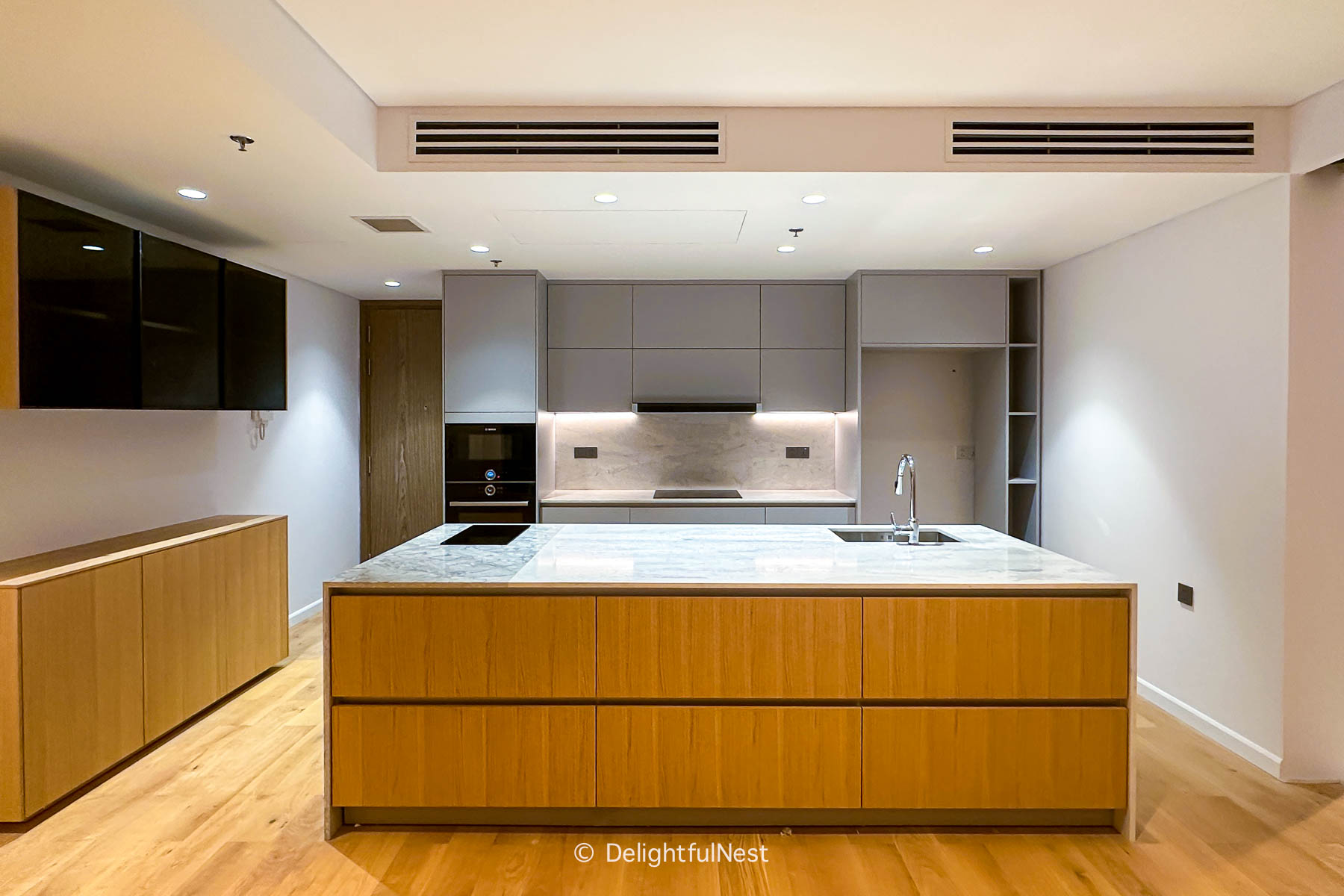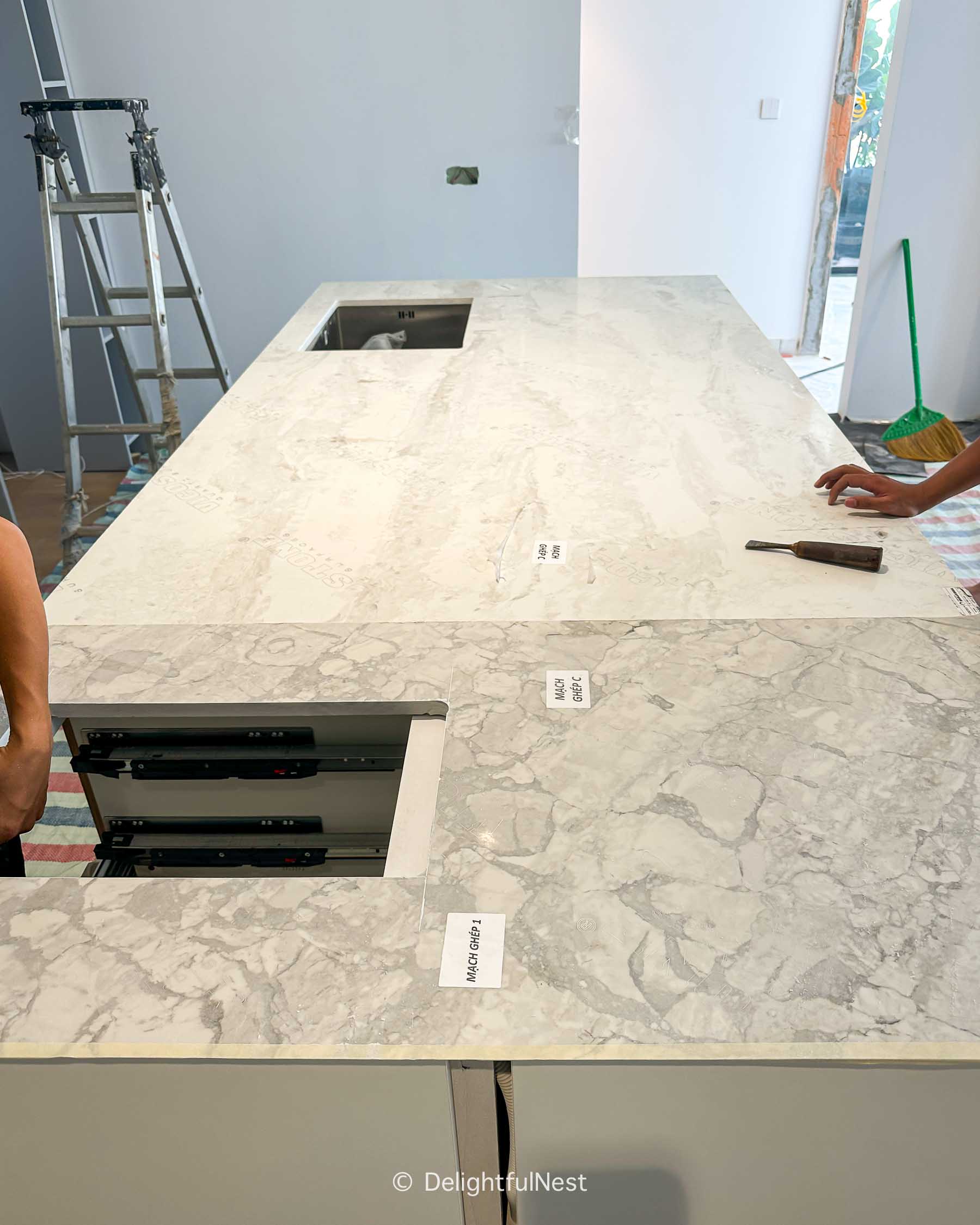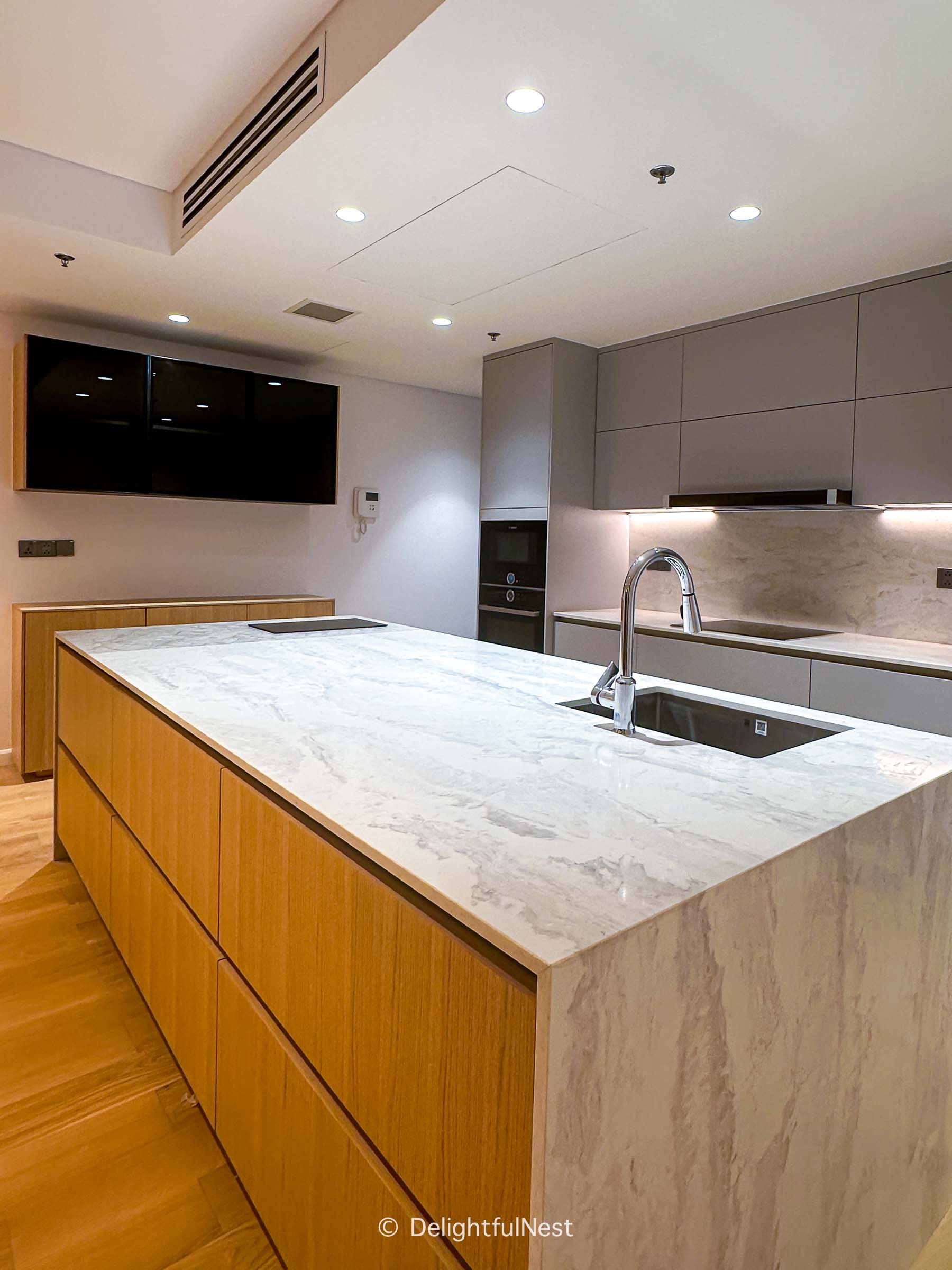An Easy Way to Hide Quartz Countertop Seams
We had an apartment renovation last year, and one of the most significant parts of the project was completely redesigning the kitchen. We had a clear vision: a spacious kitchen with a large island. However, as we planned for a 2.7-2.8 meter (roughly 9 feet) long kitchen island, we encountered a logistical challenge. The cargo elevator in our apartment complex could only accommodate slabs with a maximum length of about 2.1-2.2 meters (about 7 feet) if the width was over 1.2 meters (about 4 feet). That meant we needed to rethink our approach to the kitchen island.
Exploring Solutions
Our kitchen designer as well as the major engineered quartz producer/supplier here, Vicostone (which is sold under the PentalQuartz brand in the U.S.), suggested a common solution: pattern-matching two slabs with a seam. Vicostone assured us that they would handle the entire fabrication process meticulously, using color-matched sealants to minimize the seam’s visibility.
While this seemed like a practical solution, we were not so sure about it. After visiting several sample kitchens, including the Vicostone showroom, it became clear that no matter how skillful the fabrication, the seam would still be visible. The island would be in the center of the room, and with its width, it wasn’t possible to place the seam in less noticeable areas. Additionally, over time, sealants and epoxy could potentially take on colors from food spills or other kitchen use, further highlighting the seam. Fortunately, after hours of browsing design ideas on platforms like Houzz, Google, and Pinterest, we found an exciting option that could turn a limitation into a feature.
A Practical Way to Hide Countertop Seams
Rather than trying to make the seam invisible (which is impossible), we decided to make it a design choice. We chose to combine two slabs with different patterns, intentionally creating a contrast. There would still be a seam, but it would be an aesthetic feature, making the seam look like a natural and thoughtful design element instead of something awkward. In the end, we were pretty thrilled about how it turned out. Here’s the photo of our island from the front.

We chose to use Vicostone/PentalQuartz BQ8881 Gan Eden as the primary color for our waterfall kitchen island. It has a cool white base with dreamy, cloud-like patterns. The secondary color, Bahia BQ8883, has more dramatic grayish patterns. Together, we felt that the two slabs provided a beautiful contrast, with the cool undertones in both tying the overall look together. Both stones complement our choice of oak veneer and cool gray cabinets.

Though we could have the kitchen designer align the drawers at the front of the island with the seam between the two slabs, but we preferred having larger drawers on this side. The seam does align with the drawers on the other side of the island.
So I think combining two different slabs with complementary patterns is a very decent solution for those who don’t think they can ignore a seam on their kitchen countertop. It is an easy and practical way to help hide the seam.
If you’re going for a two-pattern design like ours, I recommend choosing stone slabs that share the same undertone to maintain harmony in the design. They should also provide enough contrast in their patterns. I’ve also seen examples where people combined quartz with a butcher block top, which looked equally fantastic.
